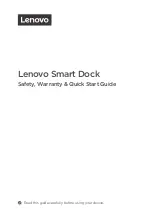
20 / 24
1 Outdoor temperature value
2 Temperature unit (°C or °F selectable)
3 Indoor temperature value
4 Temperature unit (°C or °F selectable)
5 Temperature trend (rising or falling)
6 Battery level indicator (base station)
7 Symbol for highest (MAX) or lowest (MIN)
value (indoor)
8 Humidity trend (rising or falling)
9 Indoor humidity value
10 Atmospheric pressure (rising or falling)
11 Atmospheric pressure value
12 Symbol for highest (MAX) or lowest (MIN)
atmospheric pressure value
13 atmospheric pressure unit (inHg or hPa
selectable)
14 Atmospheric pressure history (12 hours)
15 Moon phases
16 Weekday
17 Month (M)
18 Day (D)
19 Alarm symbols
20 Current time (minutes)
21 Current time (hours)
22 AM/PM information in 12-hour time mode
23 Time zone (ZONE)
24 Symbol for radio signal
25 Daylight saving time (DST)
26 Snooze function enabled
27 Graphical weather trend display
28 Humidity value (outdoor)
29 Selected channel for remote sensor
30 Data reception symbol
31 Battery level indicator (remote sensor)
32 Symbol for highest (MAX) or lowest (MIN)
value (outdoor)
8 Before starting operation
NOTICE
Avoid connectivity disruptions!
To avoid connectivity disruptions between the devices, consider the following points before starting
operation.
1. Place base station (receiver) and remote sensor (sender) together as close as possible.
2. Set up power supply for the base station and wait until the indoor temperature is displayed.
3. Set up power supply for the remote sensor.
4. Position the base station and the remote sensor within the effective transmission range.
When changing batteries always change batteries in the main unit as well as all remote units and re-
place them in the correct order, so the remote connection can be re-established. If either of the
devices is mains-powered, the power supply must be disconnected for a short moment also for this
device when exchanging the batteries. If batteries are exchanged in only one of the devices (i.e. the
remote sensor) the signal can’t be received or can’t be received correctly.
Note, that the effective range is vastly affected by building materials and position of the main and re-
mote units. Due to external influences (various RC devices and other sources of interference), the
maximum distance can be greatly reduced. In such cases we suggest to position the main unit and the
remote sensor at other places. Sometimes all it takes is a relocation of one of these components of a
few inches! Though the remote unit is weather proof, it should be placed away from direct sunlight,
rain or snow.
9 Setting up power supply
Base device
1. Put the DC connector into the connection socket of the base station.
2. Put the mains plug into the power outlet.
3. The device is energized directly.





































